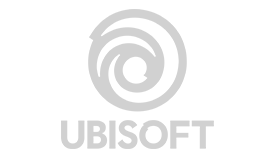What is order management?
Order management is the retail process that takes place from the moment a customer clicks on an item to view if it is in stock, to when the order is delivered to their doorstep. It ensures that orders are fulfilled accurately, completely and in the quickest or most cost-effective method available, based on the customer’s preferences.

Why is order management important?
Shoppers have come to expect seamless omnichannel experiences and fast, low-cost shipping in an environment where delivery costs are rising and supply chain disruptions threaten inventory levels. Order management enables omnichannel retailers to ship from locations closest to the customer, such as their existing stores, reducing the shipping distance thereby reducing cost and carbon footprint and increasing delivery speed. It also enables retailers to access inventory from across their fulfillment network to fill orders.
What makes order management essential for businesses?
-
Enables omnichannel retailers to access all of their inventory to fulfill online orders, reducing stockouts and markdowns.
-
Permits customers to choose to pick up online orders at a store of their choice, instead of having orders shipped to them.
-
Allows customers to return items purchased online back to the store of their choice, instead of having to ship it back to the retailer, reducing delivery costs.
-
Automates the coordination and fulfillment of orders from multiple online channels such as e-commerce sites and marketplaces.
-
Provides customers with visibility of stock availability both online and by store.
-
Routes orders to the best fulfillment location such as a store, a distribution center (DC), a third-party logistics (3PL) provider or a drop-shipper.
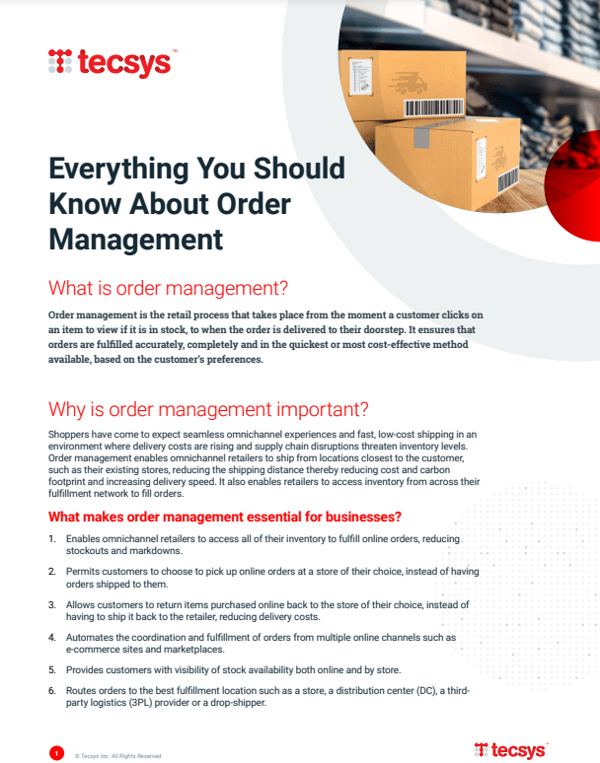
Access this comprehensive e-book on everything you should know about order management to help empower your retail supply chain omnichannel fulfillment greatness.
get e-book
What is the order management process?
Order placement
A shopper enters an e-commerce site or marketplace and selects a product. The website calls an inventory API and displays whether the item is in stock and, in some cases, the number of items in stock. The shopper adds the item to their cart.

Order processing
The order management system (OMS) performs the required tasks associated with order capture and confirmation, prior to sending it to fulfillment. This pre-fulfillment workflow includes payment authorization, capture, refund and void, fraud rules detection, address validation and credit card security verification. It is the transactional phase of the order that acts as the gate to the fulfillment phase.

Inventory adjustment
Once an order has been submitted and processed, the inventory for the items purchased is consumed. The order management system adjusts the inventory to reflect the consumption of stock.

Order fulfillment
Order fulfillment is the process of picking an item off the shelf on the sales floor, backstore or distribution center then packing it in a box or envelope to be shipped or to be collected by the customer. For an item to be fulfilled, it needs to be routed to a fulfillment location (e.g., a store or DC) where an associate is alerted to it through an interface like a store fulfillment application or a WMS.
Overview of the order management process
The order management process is driven by the buying journey, which is a process that can be segmented into four sequential stages: browse, order, collect and return. Each stage has unique data and process requirements, relying on integration with multiple back-end retail systems. At the browsing stage, a shopper with intent to buy enters a retailer’s website to see if a desired product is offered and if the product is available for purchase. At the order stage, the shopper makes selections as to how they want to collect the order and then completes a financial transaction. At the collect stage, the customer receives the order in the method selected during the order stage, for example pick up in store or home delivery. Finally, if the customer is not satisfied with the product, there’s the return stage. This is where the customer might decide that he/she does not want to keep one or several of the items in the order and gives the item(s) back to the retailer for a refund.
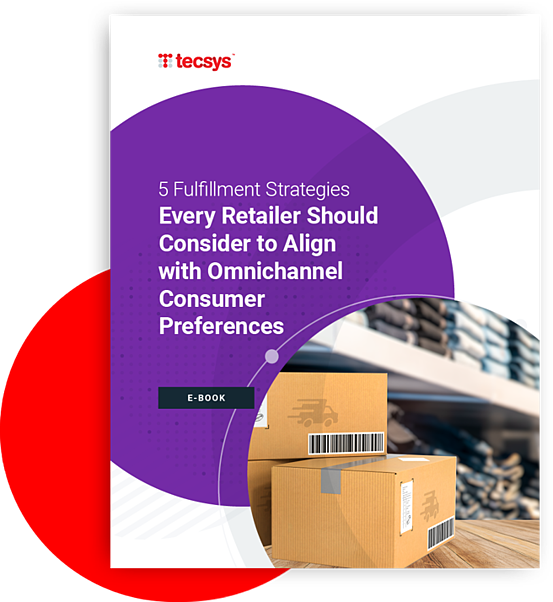
Access the ultimate guide for more insights on the key capabilities you need to achieve omnichannel fulfillment success.
get e-bookMyriad order fulfillment channels
Order fulfillment is the process of accepting shopper purchases then sending merchandise to the customer as quickly and inexpensively as possible. Maximizing customer satisfaction is a key element of this process. Branding is another consideration, since how a customer receives their merchandise reflects on the retail brand.
There are several omnichannel fulfillment channels for retailers, including:
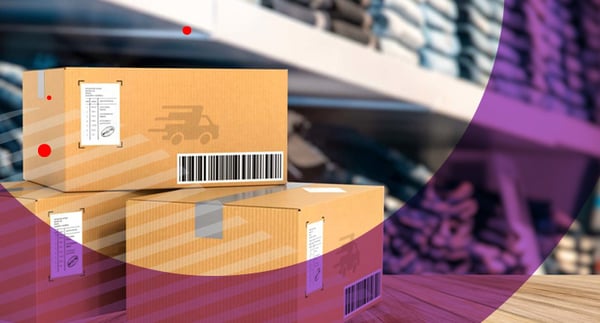
Ship-from-store
Ship-from-store reduces costs and delivery times by transforming your stores into localized distribution centers. Shipping products from the retail location closest to the customer increases inventory turnover and encourages retailers to stock more inventory in stores, which increases in-store sales. An OMS can automatically route orders to retailers’ shops for store-based retail fulfillment. Intelligent routing monitors each store’s capacity and inventory levels and sets up stores’ business rules to meet each retailers’ needs. With an easy-to-use product fulfillment application, store associates efficiently and accurately fulfill all types of omnichannel orders. This application can also provide the store associates with fulfillment workflows, invoice shipping and label printing, and remedial routing actions.
Benefits of ship-from-store fulfillment:
- Expedites delivery times.
- Cuts shipping costs.
- Reduces markdowns and clearances.
- Eliminates out of stock scenarios.
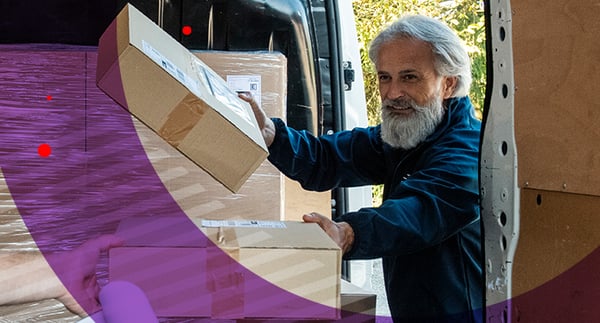
Ship-to-store
Ship-to-store is a BOPIS (buy online pickup in-store) solution that pleases shoppers and engages store resources. BOPIS lets retailers quickly prepare the right product for an in-store pickup. Whether sourced from the distribution center, 3PL or another shop’s inventory, an OMS routes orders from the optimal sources to the pickup location. Ship-to-store ensures every store has every item that shoppers want. Even pop-up stores can carry a full inventory portfolio — virtually.
Benefits of ship-to-store fulfillment:
- Uses retailers’ internal delivery network.
- Reduces stagnant warehouse inventory.
- Flexible order fulfillment for non-conventional products.
- Prevents oversold store inventory.
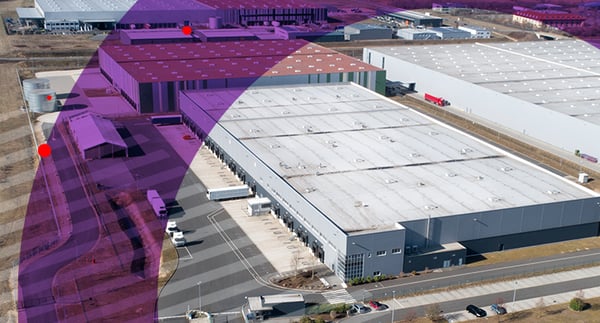
Ship-from-distribution center
Ship-from-distribution center (Ship-from-DC) is the most common fulfillment strategy. When retailers use ship-from-DC, online or digital orders are routed to their warehouse for fulfillment. It is the default shipping method for retailers without order management optimization capabilities. The ship-from-DC model, when used alone, fails to utilize the cost saving opportunities of other shipment models. Applying ship-from-DC as the only rule is not a sound practice. Instead, it should be one of multiple options the order management solution considers for order fulfillment.
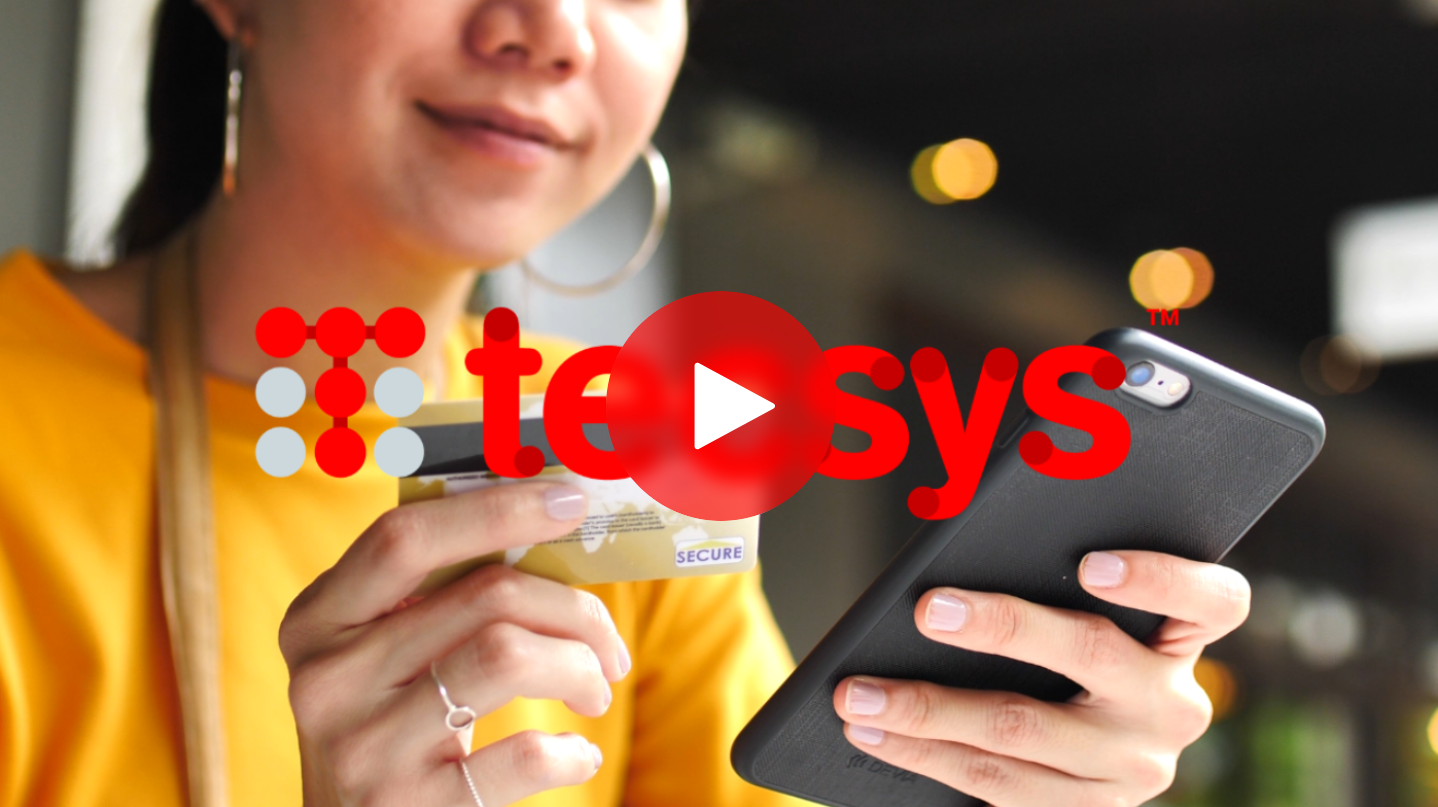
Buy online pickup in-store
Buy online pickup in-store (BOPIS or click-and-collect) is omnichannel retail’s most powerful fulfillment channel. BOPIS gives retailers the option to use existing store inventory to deliver online orders. Click-and-collect increases cross-channel sales, basket sizes, foot traffic and customer loyalty — including using merchandise from small pop-up stores. BOPIS gives shoppers the flexibility to buy online and choose a store pickup location of their choice. Customers get to physically see, touch, feel and sense the merchandise before taking it. Should the size be incorrect, they can change it right there at the store.
BOPIS can help retailers:
- Save on shipping costs.
- Reduce return rates.
- Increase sales (58.8% of shoppers buy more goods while in-store).
- Improve customer satisfaction.
- Strengthen loyalty and drive repeat purchasing.
- Expand basket sizes.
- Drive upsell opportunities.

Reserve online pickup in-store (ROPIS)
Reserve online pickup in-store (ROPIS) is very closely associated with BOPIS. However, with ROPIS, the customer does not purchase the goods online or through digital channels. Instead, they reserve the item for purchase in-store. Some argue this is not as effective as immediately locking in purchases. Although true, certain categories are more conducive to a ROPIS sale.
Retailers that use ROPIS often sell:
- Highly specialized or technical products.
- Big-ticket items.
- Merchandise which is difficult to return (such as furniture).
Key features of effective order management
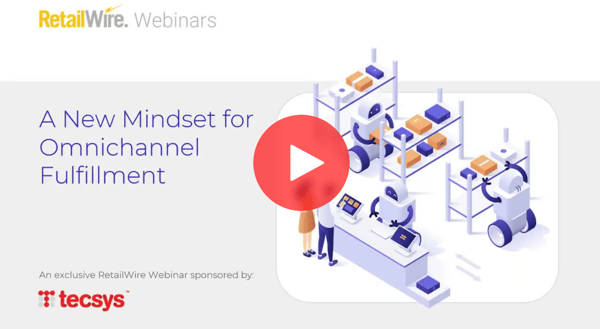
View this exclusive webinar to find out how to implement fulfillment strategies based on your retail segment to exceed customer expectations and increase profitability.
watch webinar
How can companies optimize the order fulfillment process?
Optimizing the order fulfillment process means finding the most efficient and cost-effective way of fulfilling an order, while meeting the customer’s expectations of service. The distance that an order needs to travel impacts both the cost of delivery and time for delivery. Therefore, shipping an item from a location that is closest to the customer is the optimal way of fulfilling the order as the distance the order travels is shortened. When fulfilling from a store, the store acts as a mini distribution center. When there are many stores scattered across a geographic area, orders can be routed to the store closest to the customer, which optimizes fulfillment. Routing an order to a specific store requires a view of inventory availability in the store and a set of business rules. This is accomplished with a distributed order management system.
What is distributed order management?
Distributed order management (DOM) is a method of managing order fulfillment using a multi-node model instead of a single-node model. In the case of retail, the nodes are retail store locations that act as fulfillment centers. Distributed order management routes orders to the stores within the network based on inventory availability in the store, proximity to the customer and/or other factors that are included in the order routing rules. In a single-node model, the retailer only ships from one location, for example a distribution center. In order for distributed order management to function correctly, an enterprise view of inventory is required, so that the order routing logic can find inventory that is spread out across multiple fulfillment nodes and route the order to the best inventory location.
Keeping up with the ever-changing retail environment
How people shop retail has changed profoundly. The retail industry is demanding an ever-sophisticated approach to unified commerce. Technology plays an increasingly important role in how retailers attract and convert customers. Due to the “Amazon effect,” you now need the capability to fulfill orders faster than ever to compete. Escalating customer expectations mean shorter shipping windows and less room for error.
As the industry continues to evolve, e-commerce giants delve into the brick-and-mortar fray and stalwart brick-and-mortar operations branch out to offer alternative customer buying experiences, can one retail channel truly exist without the other in today’s omnichannel world? Many interwoven channels mean high complexity in an unforgiving market; yet the two greatest challenges facing retailers today reflect company culture rather than supply chain obstacles.

Barriers to implementing a distributed order management strategy
Resistance to change
A typical barrier to integrating a DOM strategy often includes a cultural or attitudinal resistance to change and the view that e-commerce is secondary to the brick-and-mortar store. The reality is that we are in an era of unified commerce. Digital and physical are equally important and that means that omnichannel fulfillment calls for leadership to embrace this new retail paradigm. It isn’t just the supply chain management side of the business, either. The retailer needs to reassess the customer experience so that their customers experience a seamless and streamlined buying journey. What results are more robust retail capabilities and new channels for revenue.

Misconceptions of time investment
Implementing a robust distributed order management system is not like implementing an ERP or complex WMS. It can be achieved in as quickly as 90 days and averages about four months for an implementation. If the OMS provides multiple REST APIs for integration, the implementation time can be decreased even further. That means a retailer can offer a full omnichannel experience by the next quarter.

Misconceptions surrounding complexity
An order management system for a mid-market retailer should not require a team of developers or IT support. An out-of-the-box OMS, with a robust REST API layer can not only be implemented within a few months, it can be easily configured to meet the evolving needs of the business and integrated to additional systems using APIs with minimal support.
How to implement an omnichannel fulfillment strategy
Embarking on this fundamental fulfillment shift can seem like a daunting task to the uninitiated, so tapping into the knowledge base of a solutions provider can help you build a manageable road map. Since omnichannel fulfillment is not an ‘if,’ but a ‘when,’ defining those first few steps early on can be the difference between thriving and catching up.
Once the decision is made to pursue an omnichannel fulfillment strategy, it is not all or nothing. It is best to learn to crawl, then stand, then walk, and only then run. Most retailers are best suited to choose one omnichannel fulfillment strategy that is easiest for your people to embrace. You can find the one that is least disruptive to business as usual; perhaps it is already a well-known and used process. This will be an early win on which to build the team’s momentum. It also helps the organization feel that this is a challenge that has a solution.

Join Helen Atkinson, contributing editor of SupplyChainBrain, as she moderates a panel of three forward-thinking retail digital commerce experts to analyze and discuss the technologies that drive omnichannel success.
watch webinar
Order management trends
Store-as-warehouse
Distributed order management enables retailers to access inventory and fulfill from stores within their store network. This is accomplished using a cloud app for store fulfillment that comes with the OMS. While this app allows associates to see pending orders, fulfill them and print shipping labels, it has very light (or non-existent) picking and inventory management capabilities.
A store-as-warehouse system takes store fulfillment to the next level. It enables retailers to do actual inventory receiving and putaway when shipments arrive to stores, increasing store inventory accuracy. It can map the stockroom and/or sales floor to allow for directed picking using a handheld terminal. This is especially useful for big box or department stores that have large square footage, high number of SKUs and racks because it accelerates fulfillment times, increases productivity and helps enhance service level agreements (SLAs) for delivery and pick up.

REST APIs
As retailers look for new ways to optimize the customer experience, an OMS with a REST API layer can enable a retailer to build a unified commerce platform that can be easily integrated with multiple additional systems and scales with order volumes. It also makes data transfer instantaneous, which means “real-time” inventory is actually real time.
What is order management?
Order management is the retail process that takes place from the moment a customer clicks on an item to view if it is in stock, to when the order is delivered to their doorstep. It ensures that orders are fulfilled accurately, completely and in the quickest or most cost-effective method available, based on the customer’s preferences.
Why is order management important?
Shoppers have come to expect seamless omnichannel experiences and fast, low-cost shipping in an environment where delivery costs are rising and supply chain disruptions threaten inventory levels. Order management enables omnichannel retailers to ship from locations closest to the customer, such as their existing stores, reducing the shipping distance thereby reducing cost and carbon footprint and increasing delivery speed. It also enables retailers to access inventory from across their fulfillment network to fill orders.
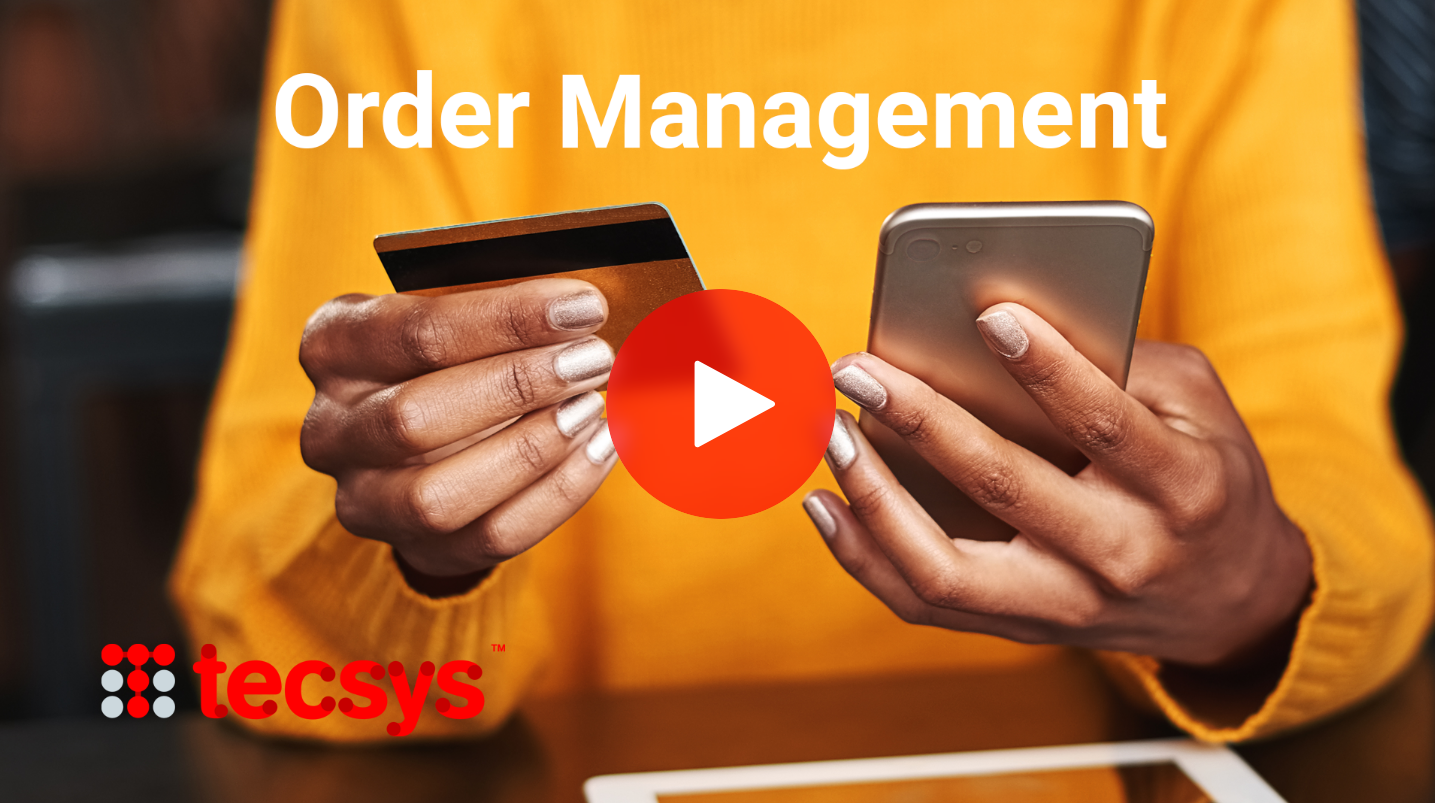
Why is an order management system important?
An OMS is a key defining feature of a modern omnichannel retail and a unified commerce experience. It is designed to solve the complexity of modern omnichannel retail fulfillment and provides a seamless shopping experience across physical and digital channels.
Why are retailers turning to distributed order management systems?
With the multitude of changes that take place in the retail industry — including the proliferation of multichannel retailing beyond single-channel e-commerce or brick-and-mortar operations — why are leading retailers turning to distributed order management systems to get them through? Well, distributed order management is the core of omnichannel retailing. An order management system enables retailers to accept customer orders from all channels, including any combination of physical store, online, mobile, voice, call center, text message, marketplace, IOT, chat and social media orders. These orders are centralized by the order management system, which gives retailers a view of inventory from all locations. Customer orders can be checked, interchanged and mixed and matched from the DOM system.
Order management system benefits

Find out what last-mile alternatives strategic retailers and direct-to-consumer brands can use in order to save money and emissions, differentiate their brands and satisfy customers.
get playbookHow does an OMS work?
-
An OMS pools inventory across multiple nodes (stores, DCs, 3PLs, etc.) and provides online inventory visibility.
-
When a customer places an order, the order data is transferred to the OMS.
-
The OMS sends the order to be fulfilled from a store, DC, 3PL, drop-shipper (or combination) based on preestablished routing rules, which include inventory availability and customer proximity.
-
Orders are picked and packed and either shipped to the customer or made ready for pick up by customers at a store, locker, DC, etc.
Who should utilize order management software?
The most common use case for an OMS is omnichannel retail: a retailer that has an online store and a physical store network. The OMS enables omnichannel retailers to fulfill online orders using stores (along with DCs) which optimizes inventory and also enables shipping from the location closest to the customer. An OMS also allows a retailer to offer click-and-collect service (BOPIS) and buy online return in-store (BORIS). The segments of retail that benefit from an OMS are specialty retailers, big box, department stores, hardware and even wholesale brands. DTC companies that have multi-node fulfillment will also benefit from having an OMS.

Find out the right strategy for your business and gain a greater understanding of how one fulfillment method, or a combination of methods, will help you in today's omnichannel retail environment.
get e-bookHow to get started with an order management system
How to choose the right order management system
An order management system designed for the next phase of omnichannel fulfillment needs to be cloud-native SaaS and scalable to handle fluctuating order volumes and peak shopping periods. It needs to provide inventory visibility across all fulfillment locations, enable advanced order routing rules, have a store fulfillment module, returns management functionality and a customer management module that includes customer data, native order creation, appeasements and customer history. A REST API layer is also becoming more prevalent as sales channels and peripheral systems continue to expand the retail tech stack and e-commerce moves toward headless architecture.
What should you look for in a distributed order management system?
A DOM should be designed to grow with you; to offer you a competitive advantage that automates order processing, helps drive fast innovation and expands revenue channels. Great order fulfillment technology keeps customers happy and supports your omnichannel ecosystem.
Control tower visibility
Making smarter fulfillment decisions by intelligently routing stock from the most cost-effective locations relies on connecting global demand to your cross-channel supply. Modern analytics coupled with real-time inventory virtualization with dynamic stock allocation is a game-changer; it is where the right DOM provider can help your retail business thrive.
Flexible rule configuration
Flexibility is king. Business rules provide DOMs with direction on how to fulfill incoming orders. These rules can change often and fast. From fraud rules to tax rate calculations to shipping methods, make sure you control how your orders are managed and fulfilled.
Global platform
A DOM on a global platform provides retailers with a rich suite of back-end functions to support and manage international retail expansion.
Tailored services offering
A successful DOM strategy goes beyond the technology and deployment. Training, support and guidance are mission critical to a smooth transition and ongoing operation.
Predictable go-live time frames
Business doesn’t wait for a lengthy implementation; look for an enterprise cloud-based delivery system that ensures retailers get to market faster than their competitors.
Regular fee schedule
Predictable software and maintenance fees help retailers create a back-of-house system that fits their budget.
Global service accountability
Retailers span international borders as they grow. Look for a system with global reach so you can reliably service your retail order management system needs, wherever and whenever your business requires it.
Retail solution expertise
Your customers’ satisfaction relies on an effective order management system that delivers on its promise to equip you for an evolving retail environment. You are best served to work with a solution provider with deep ties — and extensive expertise — in retail.
Dynamic, real-time inventory visibility
A modern DOM gives you a single view of the inventory in your warehouse, stores, pop-ups, 3PLs, and manufacturing centers. Inventory data can be viewed alongside the daily inventory flows from online orders, in-store sales on your POS system, and damaged goods in your warehouse. It offers accurate, real-time inventory data that can help you meet your promised delivery dates. By unifying your view of inventory pools across multiple channels, a DOM helps you to determine the most cost-effective fulfillment decisions based on stock locations and destinations. When customers want what you have, you can easily show them where to find it.
Next-level customer service
The ultimate in customer service includes personalized and consistent shopping experiences, every time. With a robust set of customer service tools at your fingertips, an advanced DOM drives increased customer loyalty and lifetime value. It includes intuitive call center interfaces that gives you a single view of each customer’s purchase history, while an efficient case ticket management system tracks, delegates and manages inbound communication from customers. This helps you improve customer satisfaction by arming your agents with the data they need to make smarter customer service decisions.
See how Tecsys can help you optimize your order management process
Browns Shoes
With over 65 retail stores, Browns Shoes is North America’s leading independent footwear chain. Despite having a state-of-the-art 75,000 square foot distribution center (DC), Browns wanted a way to leverage its full enterprise-wide inventory of footwear for order fulfillment. They needed accuracy, and the ability to efficiently leverage merchandise from any location — fast.
Not only did Browns Shoes need accurate inventory visibility, they needed the ability to access their full breadth of inventory. Part of this solution also had to ensure an extremely high level of customer satisfaction allowing for orders to be fulfilled in a single box.
After implementing Tecsys’ DOM, Browns Shoes now offers a robust order-to-fulfillment process. In fact, customer orders can now take as little as 15 minutes from order receipt to confirmation with tracking. Today, Browns Shoes offers express shipping with 99.5% accuracy, with even tighter lead times than originally offered.

“This implementation will enable us to stay at the forefront of omnichannel retail for years to come.”
- Richard Sejean, Director of E-commerce
Benefits of Tecsys’ Omni™ OMS
Omnichannel out-of-the-box
Advanced features are included with our core Omni™ order management system, making it one of the most complete and cost-effective omnichannel fulfillment solutions on the market today.
Built for configurability, not customization.
Scalability and ease of integration with REST API layer.
Retail fulfillment suite
Deployable as a standalone system or part of Tecsys’ end-to-end retail fulfillment solution, which includes micro-fulfillment, warehouse management and transportation management.
Customer for life philosophy
Tecsys has a track record of long-term strategic partnerships with customers, including road map participation.

Find out how Tecsys' order management solution will help you break down operational barriers and fulfil orders across a blend of channels.
get brochure









